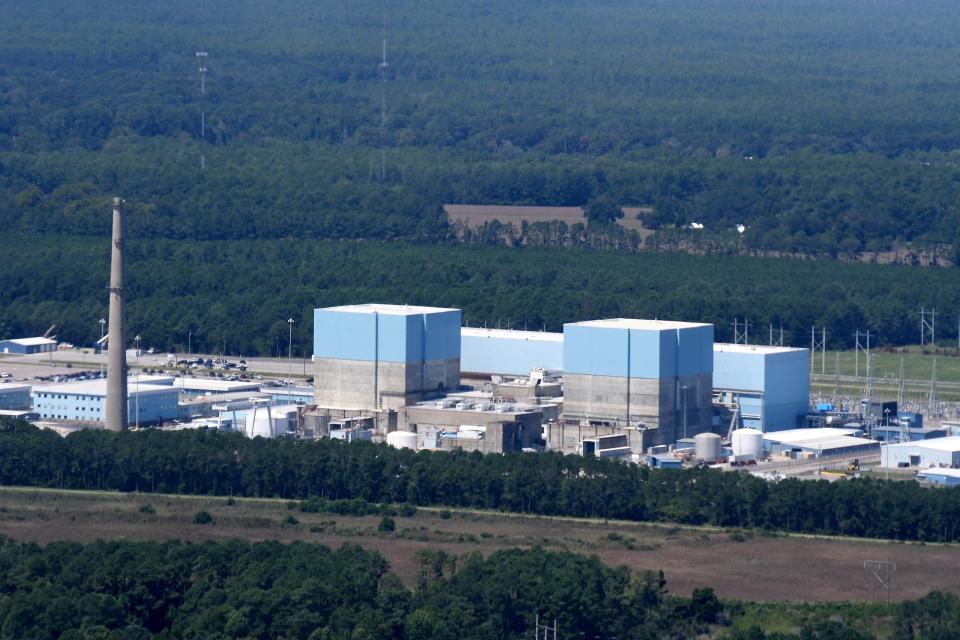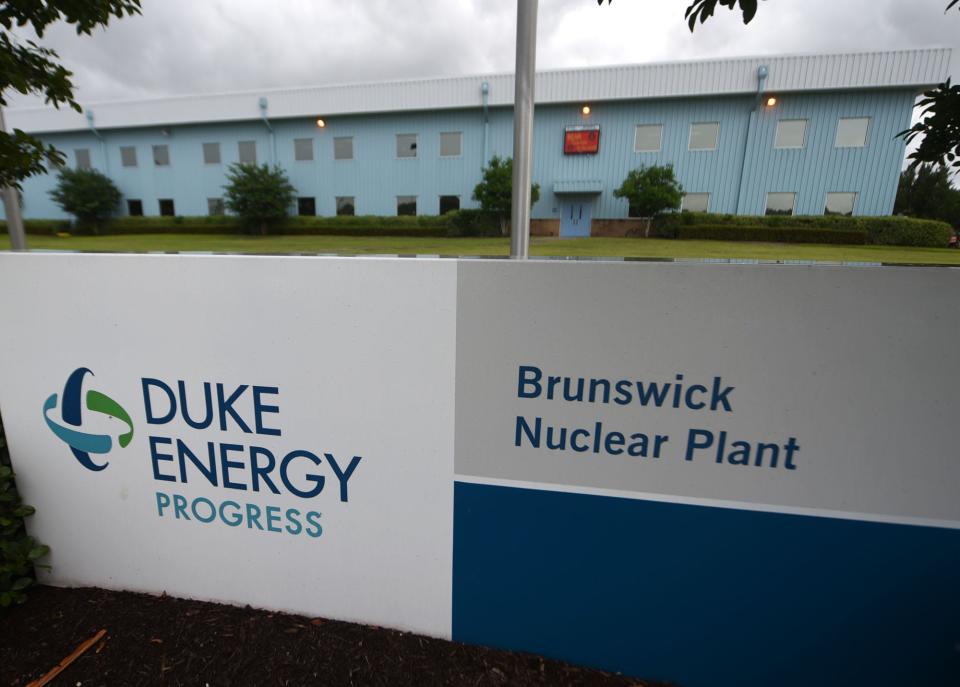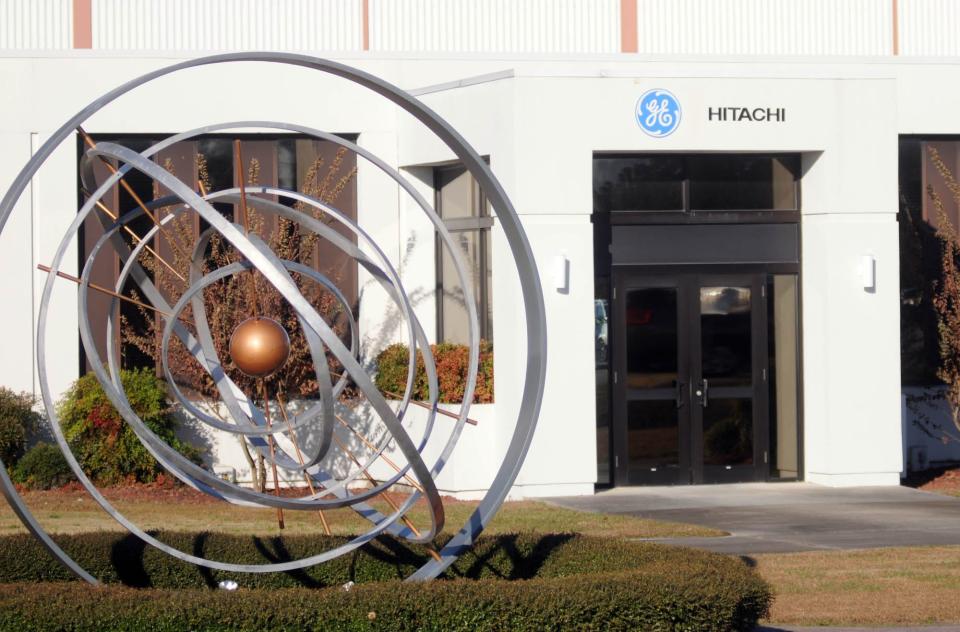Should NC's clean energy future include more nuclear power? Duke Energy thinks so
When Duke Energy filed its carbon plan with the N.C. Utilities Commission in May, there was the usual focus on retiring dirty coal-fired power plants and embracing more renewable energy sources.
The company's proposal was in response to legislation hashed out by Democratic Gov. Roy Cooper, the GOP-controlled General Assembly, and Duke Energy that committed the Tar Heel State to reduce carbon emissions by 70% from 2005 levels by 2030 and to reach carbon neutrality by 2050. Duke, as the state's largest utility, has submitted several "pathways" to meet the requirement.
But raising some eyebrows was the utility giant's plan to incorporate 570 megawatts of new nuclear power into its future portfolio. These new reactors, however, wouldn't be like the giant plants the company already operates north of Southport on the N.C. coast or in southwestern Wake County.
Growth: With offshore wind projects set to increase, is NC ready to capitalize on the opportunity?
How to keep the lights on in the future: Duke, environmentalists jostle over future grid
They would be much smaller and simpler reactors.

According to the International Atomic Energy Agency (IAEA), small modular reactors (SMRs) are advanced nuclear reactors that have a power capacity of up to 300 megawatts per unit, which is about one-third of the generating capacity of traditional nuclear power reactors.
"Small nuclear reactors are essential for Duke Energy’s transition to a cleaner energy future," company spokesperson Jennifer Sharpe said via email. "The low-carbon, dispatchable energy of SMRs allows us to ensure reliable service for customers as we add more renewables to our system."
Duke is the largest regulated nuclear plant operator in the country and plans to reach net-zero emissions by 2050.
But the idea of adding additional nuclear power to North Carolina's grid isn't sitting well with everyone.
"The biggest thing is we just don't need them," said Jim Warren, executive director of NC WARN, a Durham-based nonprofit that promotes a swift move to clean energy options. "They are way too risky in a number of ways and just too expensive for the company and rate-paying customers to get them built."
Reliable and scalable
Depending on who you talk to, the rush by countries to shift away from fossil fuel power plants either represents the last gasp for nuclear power, which remains expensive to develop, or the renaissance of an often misunderstood industry through the development of safer, smaller less complex reactors.
Backers of nuclear power note that it is a source of emissions-free reliable power, and they believe their case has been strengthened due to the threat of climate change and the need to stabilize unreliable electrical grids.
Recent world events, notably the invasion of Ukraine by Russia and the subsequent upheaval in energy markets, has even convinced "green" governments like Germany, Japan and California to take another look at retaining or even expanding their nuclear power portfolios.
According to the IAEA, nuclear power provides about 10% of the world’s electricity, with thirty countries currently operating nuclear power plants and more than two dozen others looking at the power source as a way to meet their energy needs as they transition away from traditional fossil fuel power sources.

Unlike wind and solar, nuclear power plants can also adjust output to meet demand throughout the day, allowing them to be paired with renewables to create a hybrid power generation system.
"Renewable energy sources, such as solar and wind, are intermittent, and while batteries can support them for a few hours, modeling clearly demonstrates the need for generation that can overcome extended weather conditions," Duke's Sharpe said. "SMRs are readily available and can be turned on anytime we need them."
Since they are small, SMRs also are viewed as easier to deploy than traditional reactors, which are often built to be site-specific, driving up their design time and costs. And because they are modular, a plant can also be scaled up by adding additional reactors to meet growing demand.
'Just not economical'
Three Mile Island. Chernobyl. Fukushima.
Accidents at those nuclear plants, in the United States, Ukraine and Japan, respectively, are seared into many people's memories.
Along with fears of potential radiation leaks, worries about what to do about nuclear waste produced by the plants and the energy source's association with nuclear weapons also makes many nervous.
But Warren said there's a more basic reason why North Carolina needs to move beyond nuclear energy.
"It's just not economical," he said.

Warren said nuclear plants have proven over and over again to be fiscal black holes, running into unforeseen development and construction problems that leaves utilities throwing more bad money after bad money as the cost and time lines for the projects balloon. While several new plants have been proposed in the past two decades only one is currently under construction, by Southern Company in Georgia.
"Duke Energy has already dragged us through this horror movie, and we can’t let them do it again," Warren said, referring to the utility's own efforts to build additional big nuclear plants earlier this century.
And as utilities across the world embrace renewable energy sources like offshore wind and solar, the price of those is dropping quickly.
In 2021, Wall Street financial consulting firm Lazard estimated that the cost of electricity from new nuclear plants would be between $131 and $204 per megawatt hour. That compares to between $26 and $50 per megawatt hour for utility-scale solar and wind plants.
Aside from public perceptions, the economics of developing and constructing new reactors also remain question marks.
"Significant technology development and licensing risks remain in bringing advanced SMR designs to market and government support is required to achieve domestic deployment of SMRs by the late 2020s or early 2030s," states the U.S. Department of Energy.
Unfair heat: Why Wilmington's neighborhoods aren't created equally when it comes to handling the heat
Tidal woes: 'Undergoing a transformation': How increased high tide flooding could reshape the NC coast
Homegrown nuclear reactors?
As utilities, environmentalists and regulators debate the merits of adding new nuclear power to power grids, the impact for Wilmington residents could be more than just how the electricity to keep their lights on is produced.
GE Hitachi Nuclear Energy, based in Castle Hayne, is one of the leading companies working on a new SMR reactor.

The company, which employs more than 2,000, has announced several agreements with utilities to explore the potential deployment of its new BWRX-300 small modular reactor. That list includes the Tennessee Valley Authority (TVA) and utilities in Poland, Sweden and Canada. Company spokesman Jonathan Allen said a reactor in Ontario could be completed as early as 2028.
So is Duke Energy interested in GEH's new reactor?
Allen said he couldn't discuss talks GEH might have had with customers that haven't been formally announced. Duke also declined to say if GEH would be the company's favored partner if more nuclear is in the utility's future — something that will be decided by the N.C. Utilities Commission.
"As outlined in Duke Energy’s carbon plan, we are evaluating all available SMR designs and will choose the option most complementary to our system and our goal to reach net zero," Sharpe said.
The utilities commission is expected to rule on Duke's proposed carbon plan by the end of the year. A coalition of clean energy and environmental groups have also submitted an alternative carbon-reduction plan that includes more renewable power and no additional nuclear reactors.
Reporter Gareth McGrath can be reached at GMcGrath@Gannett.com or @GarethMcGrathSN on Twitter. This story was produced with financial support from 1Earth Fund and the Prentice Foundation. The USA TODAY Network maintains full editorial control of the work.
This article originally appeared on Wilmington StarNews: Duke Energy looks to more nuclear power to meet clean energy goal

